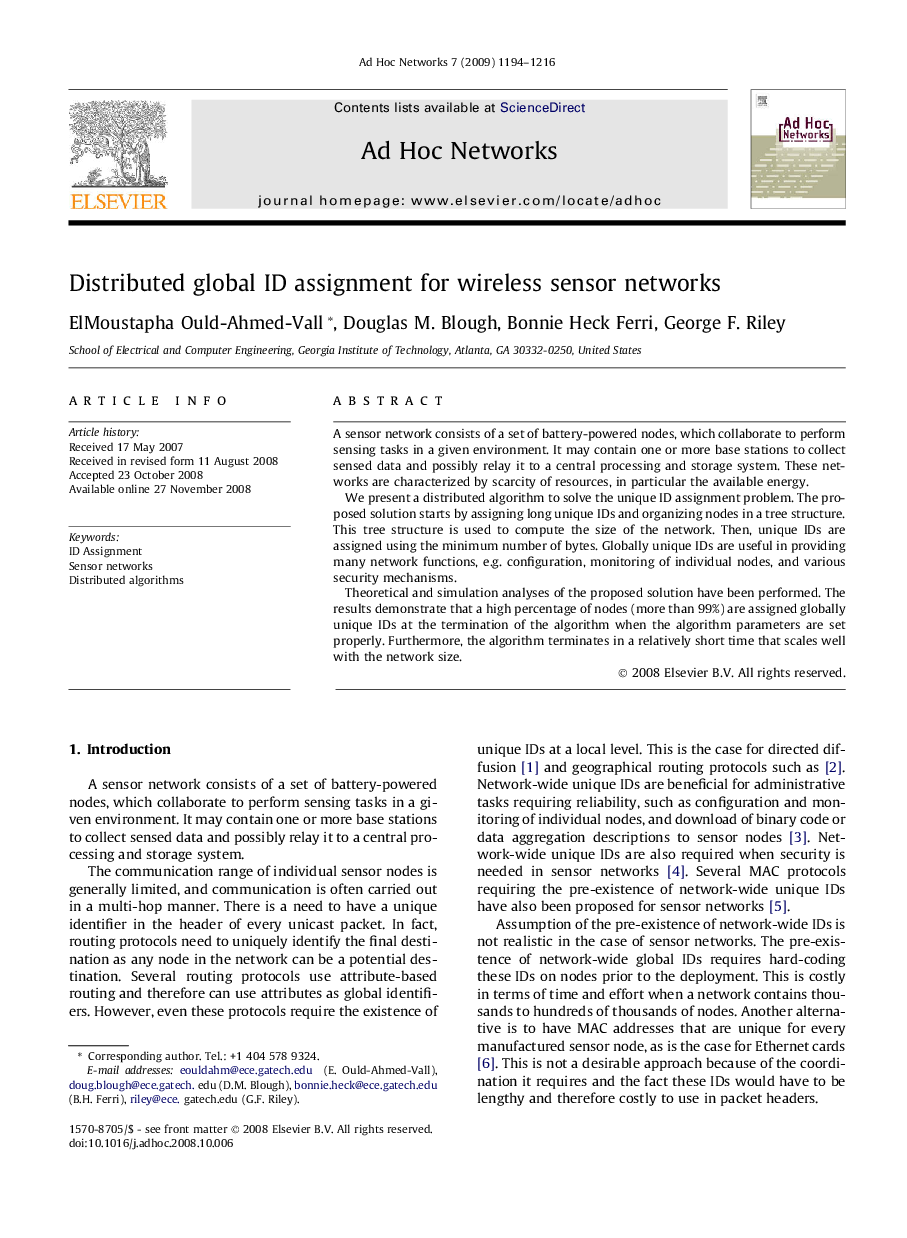| Article ID | Journal | Published Year | Pages | File Type |
|---|---|---|---|---|
| 446321 | Ad Hoc Networks | 2009 | 23 Pages |
A sensor network consists of a set of battery-powered nodes, which collaborate to perform sensing tasks in a given environment. It may contain one or more base stations to collect sensed data and possibly relay it to a central processing and storage system. These networks are characterized by scarcity of resources, in particular the available energy.We present a distributed algorithm to solve the unique ID assignment problem. The proposed solution starts by assigning long unique IDs and organizing nodes in a tree structure. This tree structure is used to compute the size of the network. Then, unique IDs are assigned using the minimum number of bytes. Globally unique IDs are useful in providing many network functions, e.g. configuration, monitoring of individual nodes, and various security mechanisms.Theoretical and simulation analyses of the proposed solution have been performed. The results demonstrate that a high percentage of nodes (more than 99%) are assigned globally unique IDs at the termination of the algorithm when the algorithm parameters are set properly. Furthermore, the algorithm terminates in a relatively short time that scales well with the network size.
